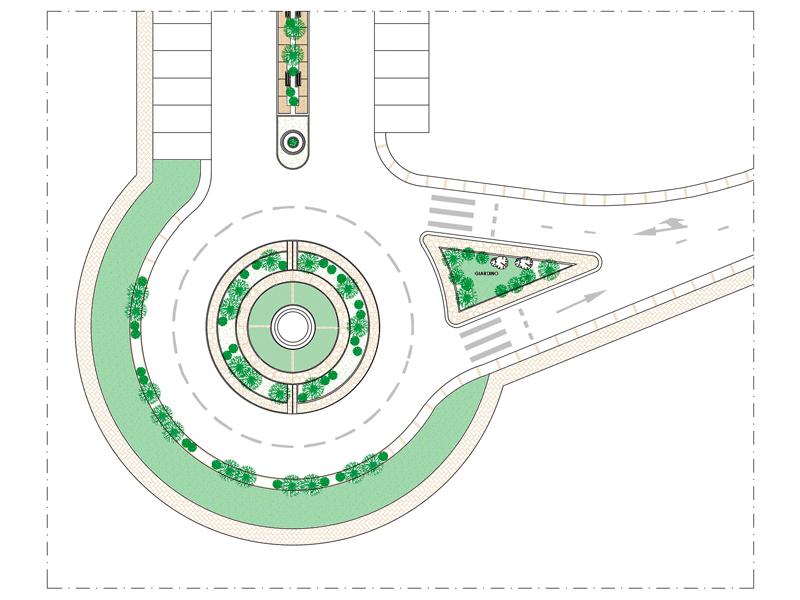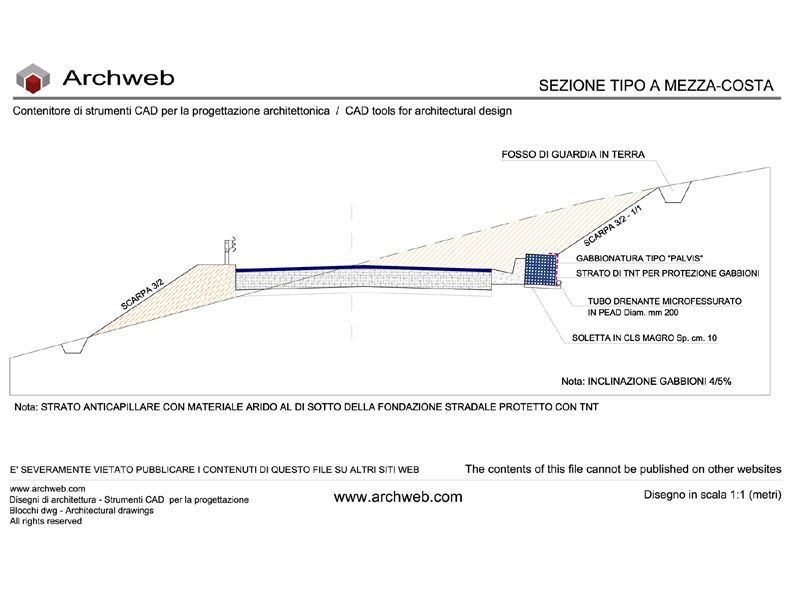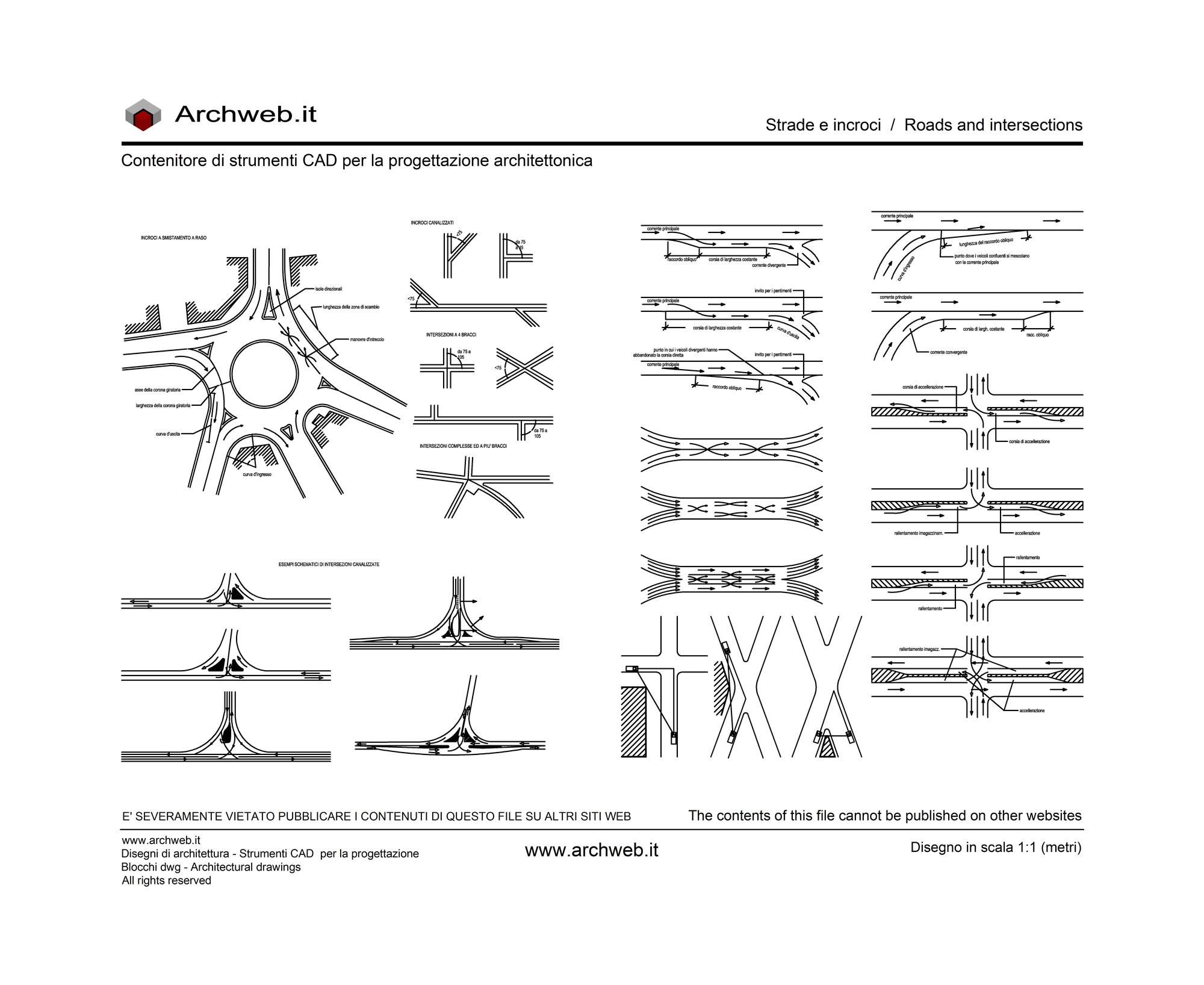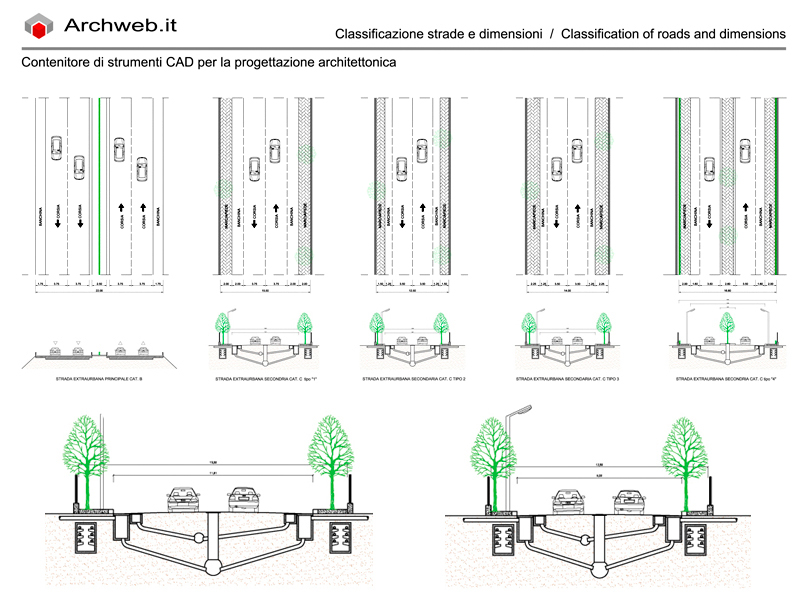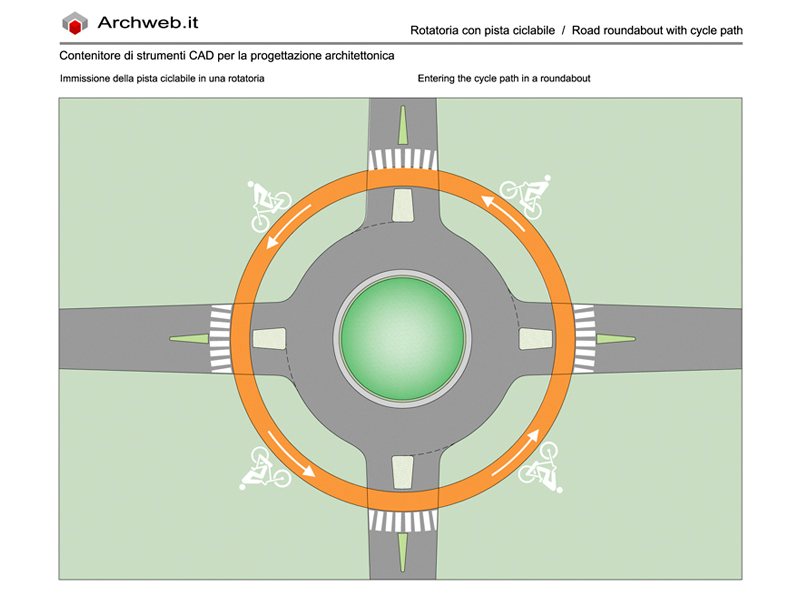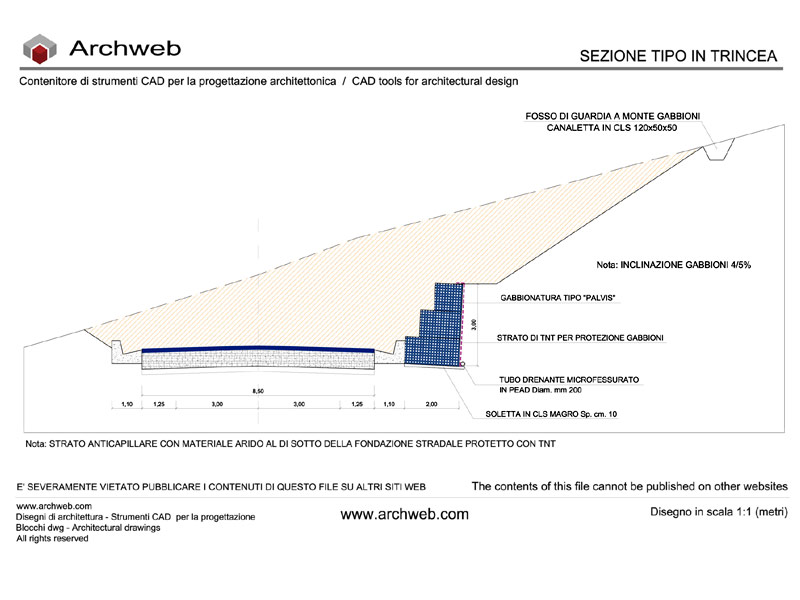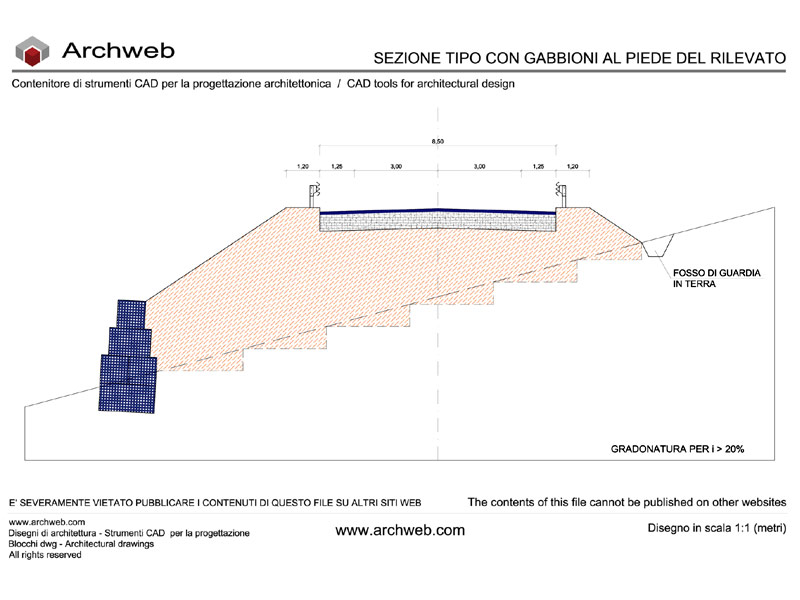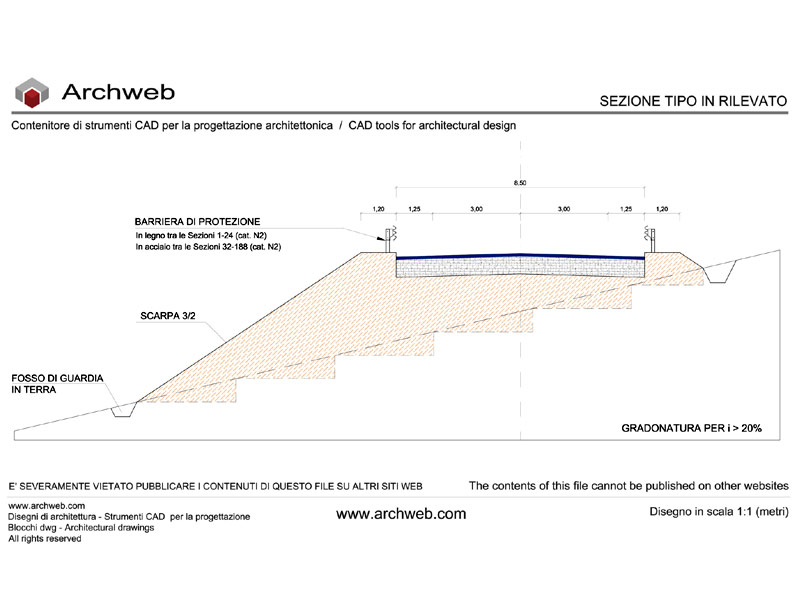Registered
Bitumen transition joint
Section in 1:100 scale
The term “elastomeric bitumen transition joint” refers to a structural connection between two types of pavement, usually between two different materials, where one of the materials is made of elastomeric bitumen. This type of joint is designed to handle deformations and dimensional changes caused by different environmental conditions, such as temperature changes and loads applied to the road surface.
Elastomeric bitumen is a material that combines the elastic properties of the elastomer with the characteristics of bitumen, making it flexible and suitable for road environments subject to dynamic stress. Elastomeric bitumen transition joints are often used in road areas to ensure a smooth and long-lasting transition between different types of pavement, for example between a section of asphalt and one of concrete.
These joints help prevent the formation of cracks and structural damage caused by movement or thermal expansion, improving the overall durability of the flooring. Furthermore, they allow a certain flexibility in the structure of the road surface, reducing the risk of breakages and damage due to mechanical stress.
It is important to note that the design and installation of elastomeric bitumen transition joints must be carried out according to technical specifications and local regulations to ensure effective performance over time.
Recommended CAD blocks
How the download works?
To download files from Archweb.com there are 4 types of downloads, identified by 4 different colors. Discover the subscriptions
Free
for all
Free
for Archweb users
Subscription
for Premium users
Single purchase
pay 1 and download 1






























































